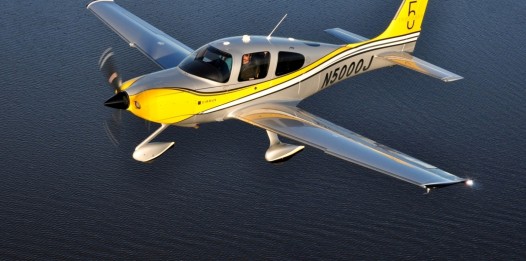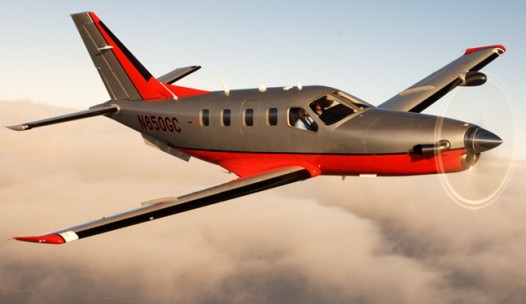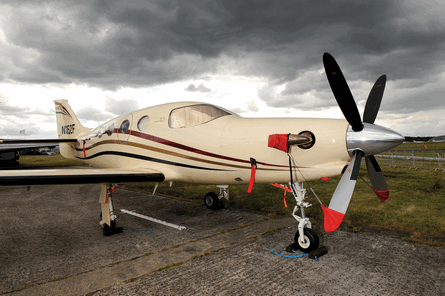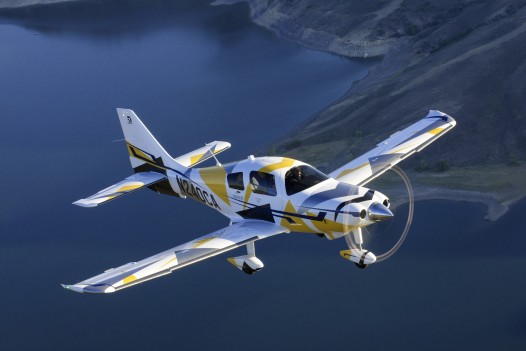Shana Bartell
The Aircraft Buying Process
Are you tired of having to sit and wait at the hold short line for faster airplanes? Does it always make you jealous when your Cirrus buddies brag about 170 knots and all you get is a meager 120 in your 172? When you’re getting bounced around in turbulence trying to hold your altitude, while running checklists and trying to calm your passengers, don’t you wish you had an autopilot? And, when your favorite team is in the biggest game of the year and you’re flying back from a business meeting two states away, don’t you wish you had XM Radio?
It might be time for an aircraft upgrade.
The Mission
First and foremost, before you start drooling over a specific airplane that all your fast friends have, you have to sit down and assess what your mission is.
Some important questions to consider:
- Will you primarily be traveling for business?
- Are you planning on using the plane to go on vacations with the wife and kids?
- How many passengers will you typically be taking?
- How far are your typical destinations?
- Are you going to be flying in the mountains?
- How much baggage will you typically be carrying?
- How many stops are you willing to make en-route?
If it is mainly going to be you or you and one passenger, then useful load will not be an issue. If you’re taking the family along with you often, then useful load will be a big issue (same thing with multiple passengers). Trip distance comes into play with the range of the airplane and the speed, coupled with how many times you want to stop for fuel (if you go to New York from Texas a lot, you probably want something faster than a Cessna 182). Mountain flying would dictate the need for a turbo-charged aircraft. If you are planning on carrying a lot of weight, a Bonanza or Saratoga may be better suited for you.
To recap, here are some typical missions with suggested airplanes:
- Business trips with 2-3 hour legs, solo (normally aspirated or turbo models available): Cirrus SR22, Cessna Corvalis, Columbia 400, Beechcraft Bonanza, Piper Malibu line
- Family Vacations, lots of passengers, long legs, lots of bags: Beechcraft Bonanza, Extra 400, Lancair Evolution (Experimental), Epic LT
- Or, in the twin market: Beech Baron, Cessna 414 or 421, Mitsubishi MU-2
- Longer Distances: King Air, Swearingin Merlin, Extra 500 (should be certified this year), Socata TBM, Citation Mustang, Pilatus PC-12, Embraer Phenom 100 or 300.
The Process
So, you’ve figured out your mission, settled on a make and model, and now it’s time to buy one, right? Well, not quite. There is a process that every smart buyer must go through in order to find the right airplane.
The Search
The best places to search are the online listings (Trade-A-Plane.com, Controller.com, and ASO.com are the most popular). There are some, but very few, sellers who advertise around local airports or by word of mouth. Most of the airplanes for sale you would want, you can find online.
Search with criteria. Figure out your budget, what features you want (A/C, type of GPS, type of Autopilot, Glass panel, etc), and age of the airplane. Some airplanes of the same make and model have vastly different features, so study each one that looks good carefully.
Aircraft Valuation
Want to know if the asking price is reasonable? Do a valuation on the airplane. There are several paid services online that do valuations. Just Google “Aircraft Valuations” and you’ll get a few options.
Maintenance History
Once you’ve found an aircraft you like, BEFORE making an offer, get the complete maintenance history of the airplane to look through. You want to make sure there is nothing hiding in there. Seller doesn’t want to give it to you? Buyer beware! You might want to take your business elsewhere.
Test Flight
You’ll probably want to fly the thing before you take the plunge. This might not be possible in all circumstances if the airplane is across the country. If this is the case, you may want to find an independent third party in the area to go take it for a spin for you and give you a report on it.
Pre-Purchase Inspection
To make double-sure there are no surprises, have an expert look at the plane. Find a mechanic who specializes in that type of plane and arrange for a pre-purchase inspection to be done. Again, this will present anything that has been hiding, giving you negotiating power.
Negotiation
Most asking prices are negotiable. Using your valuation, your maintenance history search, and the results of the pre-purchase inspection, you are now informed enough to negotiate and make a final offer. Try not to completely lowball the seller or you won’t get anywhere. Make an offer you deem is reasonable, remembering that a seller’s idea of reasonable is sometimes very different then a buyer’s idea of reasonable. Use the data you have collected, but be willing to negotiate too.
The Closing
We recommend doing the closing through an Escrow company. They are the pros at handling the exchange of monies, dealing with the FAA, and making sure everybody get’s paid.
The Pickup
The plane is now yours! Insurance companies usually require some form of transition training or an insurance checkout before you can fly the plane solo. Find an instructor who is an expert in that airplane, not just a local CFI who may have flown it once.
Need Help?
Sounds like a lot of work? It is. Most buyers don’t want to go through all of this, they just want to get their airplane. But, going through this process patiently can save you, the buyer, a whole lot of money.
Don’t have the time to go through all these steps? Well, we can help. High Performance Aviation has done a number of Aircraft Acquisitions for clients in the past. We would love to help you go through the process of finding your next airplane and getting you a good deal on it. Contact us today!
Would you like more information?
Send us a message below.





